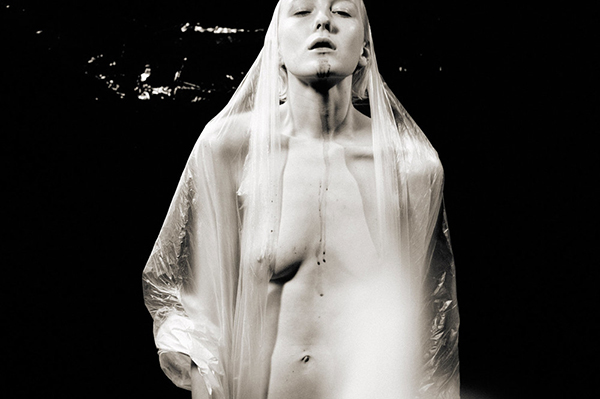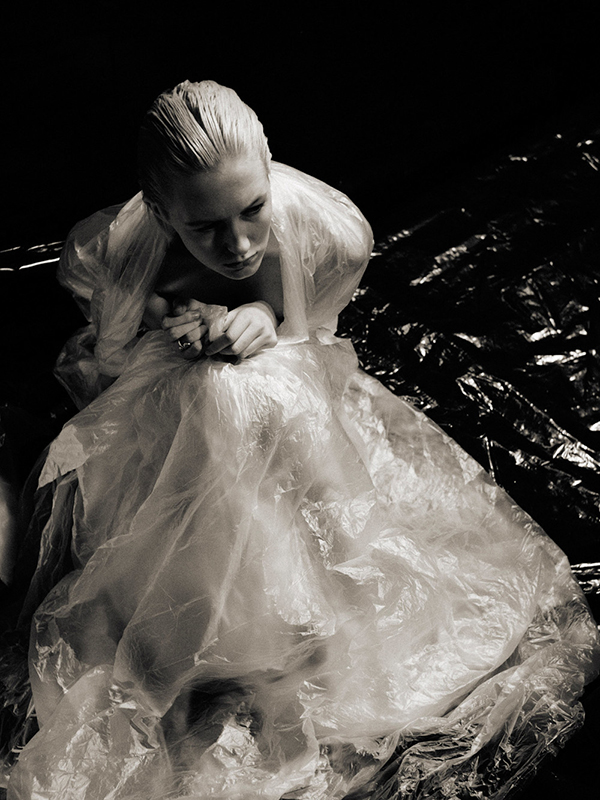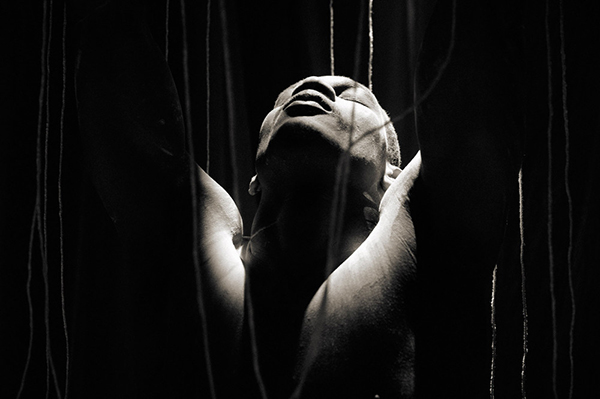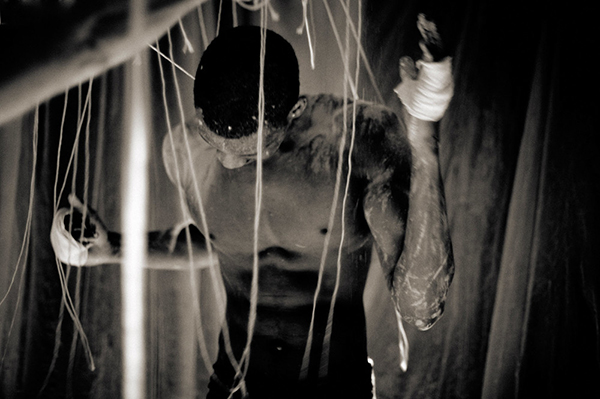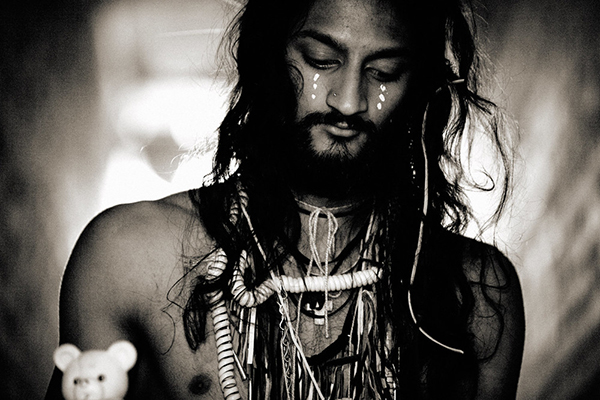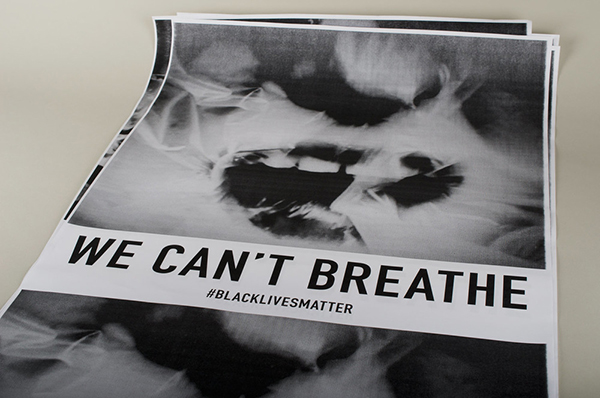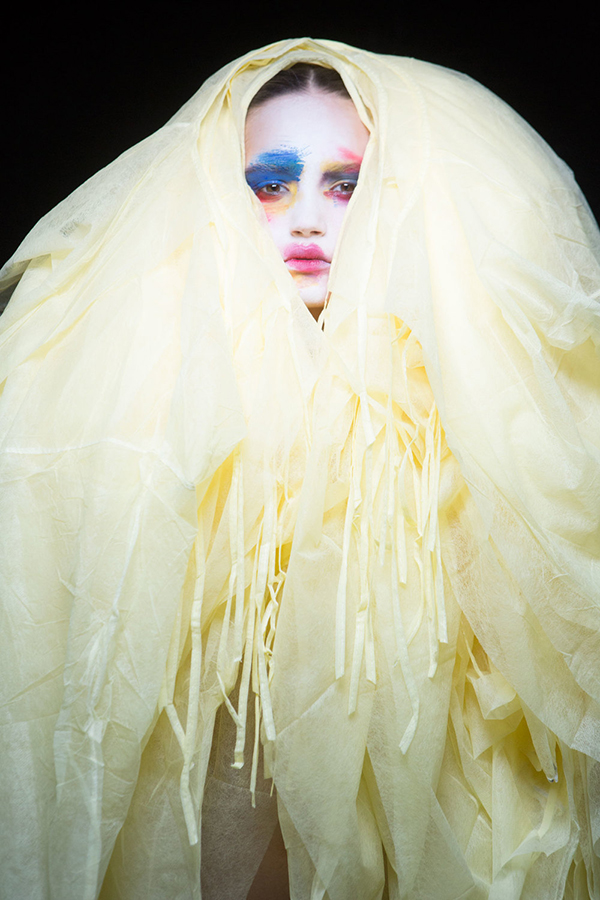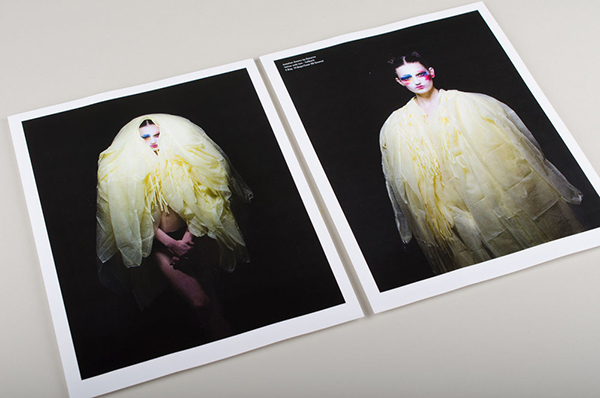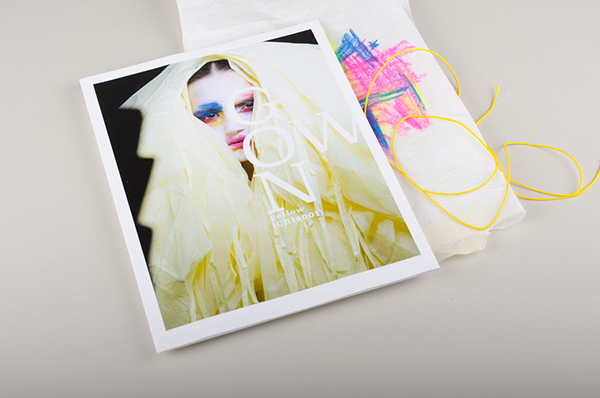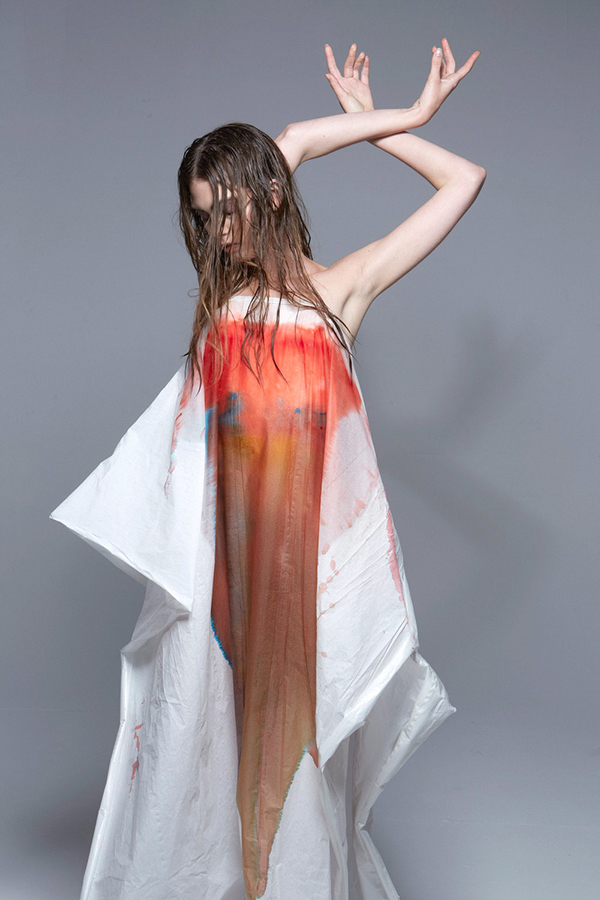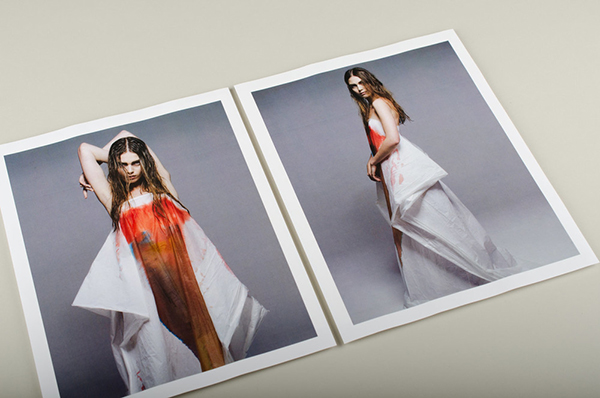Michael Sharp is a video artist, creative art director, photographer, and just an overall incredible man. He was brought up in the UK, but has lived in Amsterdam, and Australia, and he is now based out of New York. A perfect place for a visionary of his caliber to find the supportive and creative environment that helps his work flourish. Although he is currently living in New York, his work is extremely collaborative, and uses artistically global thinking to create pieces that are inclusive and imaginative. His projects include graphic design for experimental music groups, editorial fashion collaborations with Brendan Burke that pushes the boundaries of what is possible in the realm of fashion as art, as well as multiple video pieces that elucidate the human condition in exciting, innovative, and prolific approaches. He is a founding member of the China Heights Gallery in Sydney, and Founder of the non-profit arts organization Wasted Spaces, an art space that hopes to break down the pervasive white walls always to be found within the usual contemporary art galleries dotting the city.
We sat down to chat at the ConArtist Collective in the Lower East Side to talk about his background, his inspirations, and his latest concepts. His newest project will be on view at the gallery Lazy Susan, and the event is meant to spur dialogue about one of the foremost sociopolitical issues of today. 24 people will be standing, an hour each, over the course of 24 hours, in support of those facing inequality, brutality, and injustice on an ongoing basis.
Standing Up: Black Lives Matter
Opening Reception:
May 12 | 6pm – May 13 | 6pm
Works and discussions surrounding the exhibition run through May 17, 2016
191 Henry St. New York, NY 10002
Justine: Your work is extremely collaborative and global in its approach and it’s incredible to see how many projects you’ve been involved in. I’d love to know more about what brought you to such a vast reach of mediums and concepts.
Mike Sharp: I’m from a place called Loughborough which is near Nottingham which is where Robin Hood and his Merry Men lived…which I always say because no one knows about Loughborough. Nottingham they might know, but they definitely know Robin Hood. I grew up in a very working class family, my dad’s a contractor, bricklayer, and I was always interested in art, but I don’t know if I’d call it that because growing up I had no reference to art whatsoever. I’d never been to a gallery. Probably the first time I went to a gallery I was 25. So I had no connection to art, I was interested…but I suppose my first interest was fashion, because that’s accessible. When you’re 14/15, that’s how you can express yourself. I think if I had a different upbringing maybe I would’ve been a fashion designer. I was really into it…but I didn’t know anyone who was remotely creative. There was no thought of me, doing anything creative as a job…because it didn’t seem as possible. I went to university and did a degree in geography…I don’t know why I did that, I had bad advice…and I needed a job…I came back home, got a job in a call center and hated it. Then I was offered a job in Amsterdam, and that was what started me in a different trajectory.
How did moving to Amsterdam change your life?
I met people with different backgrounds and perspectives. I could start to grow…that was when I was 24. I started to be move involved in art and started making it. I went to Ikea, and I was like “This is shit. I can do better than this.” I went home, and painted on a found piece of board, and I really liked it, I enjoyed doing it, and people enjoyed it too. Then I had a show, and people liked that, people bought them…and that was it for a while.
The China Heights Gallery and Wasted Spaces are both really awesome, both in concept, and conception. How did they come to fruition?
I moved to Sydney, Australia, started working in a bar and I met some other artists who I’m still in contact with and we opened China Heights Gallery. And that was great…we were living there and it was kind of like that bohemian fantasy. So we were running galleries, and making art, and I decided to become a working artist. Like try to make a living from my art, and I started to really hate it. I was making art that wasn’t very good, because I was trying to make it to sell it and I didn’t enjoy it. No one wanted to buy it. So I was like, this is shit. I came back to Amsterdam…stopped making art for 6 or 7 years. Concentrated on commercial design and art direction, and then moved to New York 6 or so years ago, and took stock of my life.
The switches you’ve made in where you live are inspiring, some people will stay in one place their entire lives, but what made you come to New York? What was so attractive about this city?
Obviously, NY has a long history of art, and a lot of the art I’m inspired by has had its home here. Like punk rock, that attitude in art I really liked. The untrained style of it. I’m not a huge fan of the art school necessarily, I think it’s great to concentrate for 3 or 4 years and experiment, I think that’s fantastic. However, there’s also a danger that you can know too much, and you start to make art kind of by numbers, formulaic, and self referential and I find it very boring. I think it should come from another place, I think that’s what the role of art is. It’s to try and figure out what it is to be alive, big questions…not “I’m referencing some Renaissance painter because I’m so clever.”
It’s not interesting to me…so, I moved to NY and I thought I want to make art again. I made a list of the things I love about making it, and didn’t. On the list of things I didn’t like was the commercial aspect of it. I couldn’t do it for money anymore…I didn’t know how to make that work. So, I thought the easiest way to resolve that was to decide not to sell my work. As soon as I made that decision, it completely changed my outlook. And it was great because now I’m doing it for myself and I enjoy it again. I do it for the pure pleasure of doing it. If people like it or they don’t, I don’t really care…and that’s a nice place to be.
What is your process like as an artist?
I try to be as un-self-conscious about it as possible when I’m making it, which is hard to do with video art. Because there’s a process….if you’re doing an abstract painting, you can lose yourself in it, but video art, or anything that involves production that’s really difficult. I create a concept or loose idea, and then I try not to think about it again. I try to think about it as little as possible when I’m doing it too, just enough to get it done. Because if I think too much, I’ll be in the middle of it and realize how ridiculous it is. Like, there’s this girl wearing a plastic tarp on top of a roof and this is crazy! But if you over think everything you wouldn’t do anything.
It’s difficult sometimes because we live in the world…not a cave…so it’s hard not to be affected by what’s around you or what people think, but generally I try to really just do not think. And also try to not think about what it is about…everyone wants to know “What’s it mean?” and “How do you do it?” And for me those two things are…it’s very similar to the relationship we have with magic. Art is magic. When we know how a magic trick is done, we’re disappointed, because we feel let down. It’s the same with art. We want to know what’s behind it but when we find out, we’re disappointed, because its trick.
And we lose the personal connection we had when we first saw the piece.
Exactly. If I tell you what I think my work is about, then it can only be about that now. You can’t put your history and personality or perspective…it can’t be a mirror anymore…and I think that’s the power of art, it’s a mirror. I don’t mind talking about how I did it…but I find that quite boring.
What about video really engages you as an artist, and why do you find that it’s the medium you choose to work with so often?
I think there’s something about the moving image that really gets us. A few hundred years ago when we didn’t have electronics, a huge oil painting was very impressive…but now in this world we live in, it has to compete with 3D movies, virtual reality glasses, and I think it’s a lot more difficult to engage people with a painting.
Their attention span seems to be short these days too.
Yeah. And we should give a painting time, but I also think that time moves on, and a painting that was done ten thousand years ago, won’t have the same relevance that was done 500 years ago…there’s a context. It loses its power. And I think it’s not necessarily the fault of the viewer, I think it’s just the way it is. Having sound or moving images, you can affect people a lot more, especially sound. I think sound really grabs people. Like with “Wasted Spaces” one of the things we are trying to do is to try and break down the walls of the gallery, and bring art to the people and one of the ways we do this is with sound. Like popular music, people don’t usually think “what’s it about?” they hear it, they feel it, they like the way it sounds. With contemporary art, in a gallery setting there’s this huge pressure to have to understand it, and everyone has this intense stare, but I don’t think it should be like that. Conceptual art is now the same as contemporary art, everything has to have a press release, a concept, some deep meaning, and I think many of the time artists just makes it up afterwards, or the gallery. There’s no benefit to it. I think it’s okay to just be not engaged by something.
Chelsea galleries especially. Something on the Wasted Spaces website was talking about breaking down the white walls of the gallery and how people are there but it’s so exclusive and inaccessible. A lot of the time, I see tourists walk in with their cameras and fanny packs, and they step in, and then immediately recede because they’re intimidated. But then on the flip side, there’s the MET and they’re looking at Renaissance paintings or whatever, they run up to it, snap a picture, and then run off to do the same thing to another master work. It’s kind of like people don’t know how to engage with art on a meaningful level anymore because it’s everywhere. I did enjoy how Wasted Spaces is a felt and experienced event rather than a purely conceptual event. You have a very engaging way you work…its very collaborative. Even where we are now, ConArtist, it’s a collective, and film is very collaborative. It’s difficult to do it by yourself.
The things I like about art, is making it with my friends. Particularly in New York I find it difficult to hang out with my friends…I’m not really sure why. I think it’s because everyone is always looking for the next, better thing to do or a better offer. There is a lot of cool stuff going on. Every night there are ten different amazing things to do in Manhattan alone. So I wanted to collab with my friends, to hang out, and not just party or get drunk, but to spend quality time with them and produce something…and I think that’s the best way to hang out with your friends.
The reason why I started to make films, was I was making installation work, large scale, and it’s really a lot of work to make them, install them, but also to get people to come out and see them. I’m not very good at that. If, say for instance, you get 1000 people to come out, that’s still only 1000 people who have seen it. So I started to film it, so the art could have a life outside of the time it was installed…and then that video, started to become work. Then I started creating the sound, and it all came from installation.
On top of everything else, you also teach at The Shillington School of Graphic Design. You are so busy, so it must mean a lot to you in order to make time for it.
I started teaching about 5 years ago, and people always told me I should be a teacher…I wasn’t particularly interested in it, but I started doing it so I could do less commercial design. I was surprised how much I loved it. It’s amazing to be able to basically change someone’s life and give them new skills. They are usually doing a job they don’t particularly like…they come to class after work, and their dedication is amazing, and at the end of the class they create a portfolio and go out and get a job. They go from installing air conditioners to being a graphic designer, and I feel honored to be part of that process. I have a very pragmatic way, sometimes, of creating…sometimes, it’s sort of mystical and airy-fairy, but I think with design I see graphic design as a trade, it’s the same thing as being an electrician or plumber. It can be taught at a degree level, but at the end of the day, you learn more when you’re actually on the job.
That’s very true. Just because someone has the technical skills doesn’t mean they have an artistic eye.
The great thing about it is that we tend to focus, in the creative industries, on the big names. But some of these people don’t want to work for Mother, right? They’d be happy working in house for Coca Cola. Everyone can find their own level, and I try to be realistic with them. Most of these students won’t ever work for Mother, but they wouldn’t want to either. It’s not really about what I want for them, its what they want…professionally.
So you’re very respectful of their autonomy as students?
Yeah, I try not to force my style on them. When I first started being creative, I was just designing for myself and that’s kind of the key: design has a problem to solve, and a client to make happy, a demographic to reach. When I first started designing, I was just doing it for my friends, and me. I was the demographic, so it was easy! Then I took a job for an agency that only did banking and insurance, because I wanted to be a proper graphic designer. And that’s the role of a good graphic designer. There should be no ego involved to figure out the best solution. There’s also some psychology involved…getting into the head of who you are trying to reach, which I find interesting. So, yeah, I try not to push my taste on them…but I can’t help it sometimes.
I went to Pratt for fashion design and there were teachers, like you, who would give me the skills I needed, but then there were others who had a very specific minimalist, everything must be oversized in white or black, outlook on contemporary fashion design. They wanted everything to fit that aesthetic. I think the best teachers were the ones who gave me the skills so I could make what I wanted to make. It’s boring if everyone creates the same aesthetic, the same vision.
Yeah, exactly, and that comes down to confidence. A lot of problems we have in life, in general, come to lack of confidence. So, if you’re very confident in yourself, just being comfortable with who you are, then you don’t have to force your style or opinion on someone else, you know that there’s a huge gamut that’s correct. If you lack confidence, you may narrow your parameters a little bit because you’re scared, and usually that’s because you don’t understand.
Sometimes people are swallowed up by other people’s aesthetics, or other people’s ideas of who you are and what you should be. There are so many people who have jobs they hate, because they were thinking more about what they were told they should do rather than do what they wanted to do.
Your work also tends to be sociopolitical and emotionally charged. Have you always been interested in political art?
That’s a relatively new thing for me. I’ve been sort of non-political for a long time. I have never shown an interest in politics or activism. I believe strongly in fairness in life in general, and when I see things that are not fair, I want them to change. There are many things, right now, that are not fair at all. I think if everyone did one small thing, it would turn into a big thing. That’s how real change is made.



